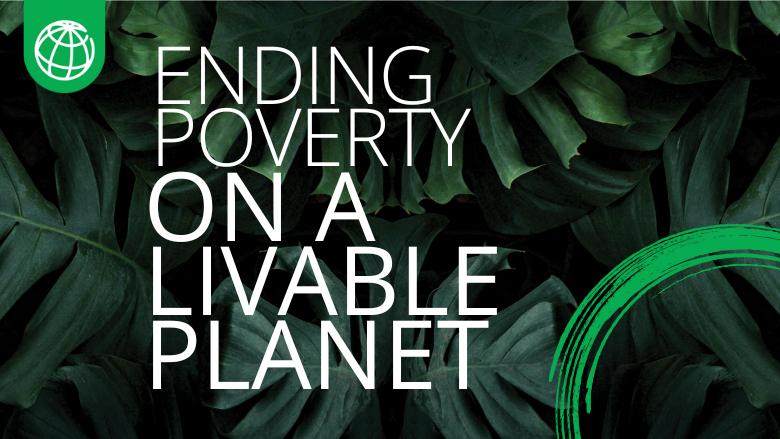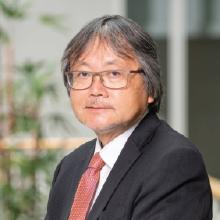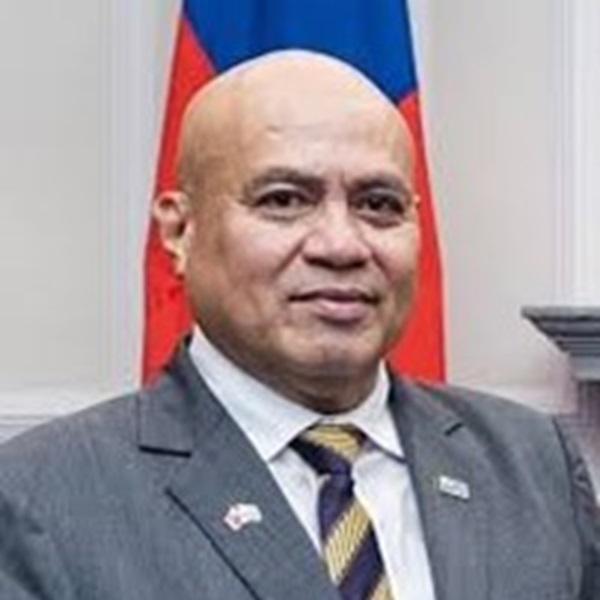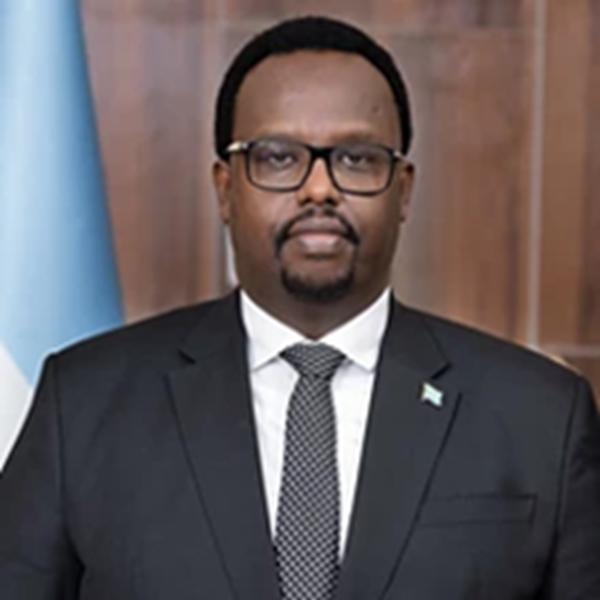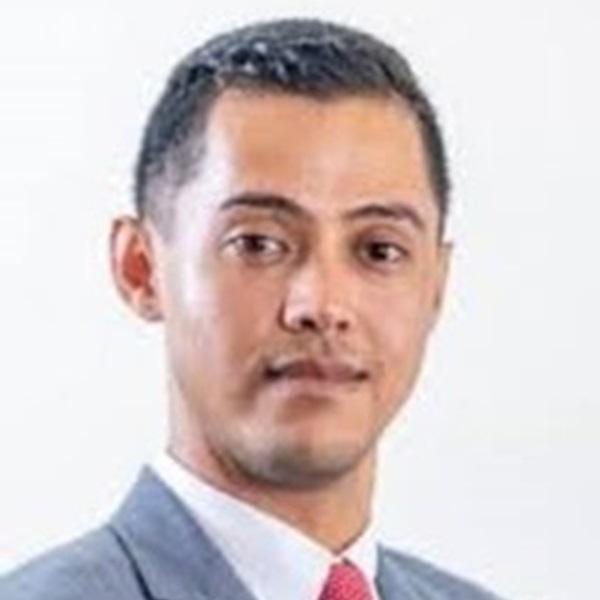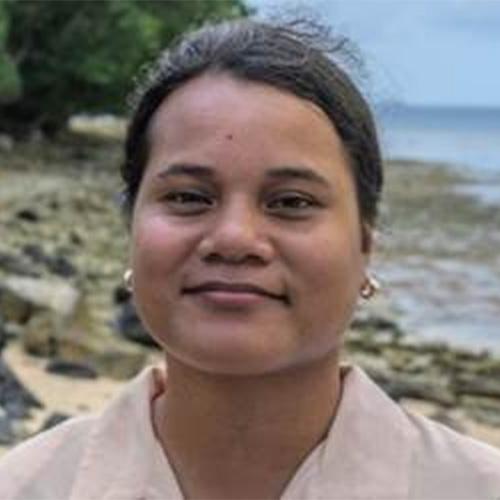[Akihiko Nishio] My name is Aki Nishio. I am the Vice President of Development Finance in the World Bank, and I will be your moderator today. Today, we will discuss the experience of the World Bank’s International Development Association, or IDA, for short, the world’s largest source of concessional finance for low income and vulnerable countries. This is a significant moment because this is the first time an IDA-specific event is being held at a climate COP. This is occurring as IDA is entering the critical last mile of the 21st replenishment cycle, which will end with a meeting in Seoul, Korea, in early December. IDA has been described as the best deal in development. Let me explain what this means. Due to its hybrid model, IDA can leverage donor contributions by three and a half times. A dollar from a donor will go out to developing countries as 3.50 dollars. Also, it’s had a significant track record in terms of bringing benefits to the people. For instance, we have been able to bring better health to about 900 million people in the last 10 years in the poorest countries, and also to bring electricity to 117 million people over the last 10 years. And the beneficiaries, there are 78 of them, scattered all over the world. This is truly a global solidarity fund for development. It also has 59 donors for IDA20. Now, what is less known, however, is that IDA is also the largest climate fund for its client countries. IDA understands that addressing climate and development together is critical to building the resilience needed to withstand future shocks and seize economic opportunities to create more and better jobs in a greening global economy. We have an exciting event and an impressive lineup. Without further ado, I would like to introduce His Excellency, Feleti Penitala Teo, the Prime Minister of Tuvalu, who will kick us off today with a keynote address, Talofa, Your Excellency. So, please proceed to the podium. [Applause]
[Feleti Penitala Teo] Thank you, Vice President. Excellencies, ladies and gentlemen, friends, with all protocols duly observed, I am delighted and honored to have been asked to provide some remarks at the opening of this World Bank organized side event. Thank you, World Bank, for the privilege and a much larger or bigger thanks to your President for the courtesy of visiting Tuvalu in August of this year. Now that the World Bank and the President has been and seen Tuvalu himself. I hope the World Bank will have a far better feel and appreciation of the daily challenges Tuvalu confronts as a country in the very forefront of the impact of climate change. While all countries are affected by climate change, small island states like Tuvalu are among the world’s most vulnerable, if not the most vulnerable, to natural disasters, facing existential threats despite having contributed less than 0.03% of global greenhouse gas emissions. The impact of climate change on Tuvalu’s immediate, as in right now, and most severe. Assessment has said that currently, average annual losses from climate-related events are equivalent to 7% of Tuvalu’s economic output, and with this figure projected to increase. The World Bank’s newly launched Country Climate and Development Report for the Pacific Atoll Countries warns that a one in 20 year climate event could cause damages and losses equivalent to 50% of the country’s GDP. Climate change is therefore not a distant concern, but a present day crisis affecting our citizens, livelihood, traditional way of life, and nation’s future statehood. Estimates from the 2018 Intergovernmental Panel on Climate Change Report indicated that without extraordinary action, global mean sea-level rise could render Tuvalu uninhabitable by 2100 or even sooner. The predictions are frighteningly disturbing, with estimations that in less than 26 years, by the year 2050, more than 50% of the land territory of Tuvalu’s capital, Funafuti, will be regularly flooded by regular tidal surges. Fifty years later, in 2100, more than 90% of the land territory of Funafuti will suffer the same fate. In many countries, including Tuvalu, addressing climate resilience and sustainable development together can often lead to improved economic and social outcomes. For example, in Tuvalu, the Tuvalu Coastal Adaptation Project, or TCAP, which is our flagship initiative, aimed at delivering coastal protection infrastructure to look at Tuvalu’s shorelines against coastal erosion and sea-level rise. By stabilizing coastlines, the project also supports small-scale fishing industries, which are vital sources of income for local community. Additionally, the preserved coastal areas and land reclamation help sustain biodiversity and provide recreational spaces, boosting the quality of life and economic resilience. In Tuvalu’s effort to build its resilience against the impact of climate change, the International Development Association, IDA, concessional financing mechanisms have been essential to build climate adaptation, mitigation and resilience, which were key to Tuvalu’s developmental progress. To illustrate that point, the bulk of the World Bank’s support to Tuvalu, which has grown more than fivefold since 2018, from three projects worth 43.5 million US dollars to 10 projects worth almost 230 million US dollars. It’s focused on climate adaptations. Under IDA20, the Bank committed 89.6 million in grants, of which 61 million generated climate co-benefits. Also, under IDA20, the World Bank has helped to support reforms that strengthen resilience to climate and disaster risk for several Pacific countries, amounting to almost 380 million in total financing. There have been many other success stories of IDA support in the Pacific. The World Bank, through IDA financing, is supporting climate resilience and infrastructure development in Tuvalu in the face of increasing climate challenges. The Pacific Climate Resilience Transport Program, backed by 339 million US dollars in IDA funding across six Pacific countries is strengthening Tuvalu’s transport infrastructure against extreme weather, including upgrades to the seawall, protecting the country’s sole international seaport. These improvements are crucial for safe, good movement, and emergency access. Through the Pacific Aviation Investment Program, IDA is also helping upgrade Tuvalu’s aviation sector alongside similar efforts in Kiribati, Vanuatu, Tonga, Samoa, and the Solomon Islands. With 320 million in IDA financing, this initiative is enhancing safety, efficiency, and climate resilience in Pacific aviation while expanding tourism, trade, and market access. With a proven success record of IDA support, I will therefore strongly call for an elevated global commitment to climate action, urging nations to raise ambition and increase their financial contribution to support adaptation in vulnerable countries. I would also advocate for innovative and accessible financing mechanisms, including a call for increased contribution to IDA21, along with other climate financing, to ensure that the world’s most affected communities, like those in my country, Tuvalu, can access concessional financing to adapt to climate impact, and build a sustainable and resilient future. Furthermore, I emphasize the importance of collective action and collaborations between developed and developing nations, civil society, and the private sector, because climate resilience requires shared resources, knowledge, and technology. It is no longer the sole responsibility of government. It must be a whole of country responsibility. Vice President, in conclusion, I will strongly encourage and urge all participants at COP29 to engage actively, share insights and commit to tangible outcomes that will address the unique challenges faced by the most vulnerable countries. I would also wish to reinforce the point that climate action is a moral and humanitarian responsibility, and the success of global climate initiatives depend on inclusive and equitable support for countries most at risk, like my own Tuvalu. I thank you, Vice President, for the opportunity to provide some remarks. Thank you. [Applause]
[Akihiko Nishio] Fakefetai Lasi. Did I pronounce it right? Thank you very much, Your Excellency. The partnership between IDA and Tuvalu is such a great example of how IDA can help countries further strengthen their resilience to climate change. We now have a short video that I’d like to show you, which will highlight IDA’s impact on climate change. Please, play the video.
[Video playing] [Laurence Tubiana] There is no better thing than helping the poorest countries in building resilience against climate change. [Lionel Zinsou] Make a gesture of solidarity toward the poorest countries. Make a gesture of solidarity with yourself. Because the deterioration that climate change causes in the poorest countries will have a direct impact on the planet. [Laurence Tubiana] IDA plays a significant role in the fight against climate change, notably in resilience and adaptation. It is essential to have grants for challenging situations and such situations should not be causing increased debt. That’s an important feature of IDA, as its focus on poor countries which at the end of the day receive very little climate change financing compared with emerging economies. What is also interesting is that IDA financing is concentrated in Africa. The majority of African countries have access to IDA financing. [Lionel Zinsou] Climate change is a challenge that is felt very badly in Africa. Because despite having made very little contribution to climate change, the continent has the lowest defense against its effects. Among international institutions, there aren’t many that are customized for African countries, with instruments that are adapted to their needs. That is why we expect a lot out of IDA in Africa. [Laurence Tubiana] By 2030, we must get to a tripling of loans coming from IDA at rates that are very concessional. This is a problem for all countries today, because even poor countries today have to borrow from the international markets today at rates that are completely unreasonable. It’s unreasonable. The value proposition of IDA is that it’s development financing. And we have seen for a long time, a dichotomy in financing for the fight against climate change notably for emissions reduction. But in fact, we should be thinking of these as part of development too. The fact that climate challenges are built into IDA’s objectives, means we are automatically talking about development policy instead of a dichotomy between the two. To restore strength, to restore stability in the poorest countries, is to ensure that the multilateral system still works. [Video ends]
[Akihiko Nishio] I hope you enjoyed the video. Let me now move on to the discussion and introduce our distinguished panel. Today, I’m delighted to welcome His Excellency, Mr. Max Andonirina Fontaine, Minister of Environment and Sustainable Development of Madagascar, and His Excellency, Salah Ahmed Jama, Deputy Prime Minister of Somalia, and also Grace Malie, Rising Nations Youth Delegate, a climate activist from Tuvalu. A very warm welcome to all of you. The plan is to do at least a couple of rounds of questions and hear from you. Let me start with Minister Fontaine. I would like to start with the question about Madagascar, which is one of the countries that is most affected by climate change. Can you elaborate on the specific challenges that your country is facing due to climate change and how IDA support has been instrumental in addressing those challenges? Over to you.
[Max Andonirina Fontaine] Thank you very much, Mr. Vice President, Excellency, dear guests. Like many countries that are present here at the COP, Madagascar is, of course, one of the most vulnerable affected by climate change because we are an island in the middle of the Indian Ocean. We protect the whole Eastern African Coast from the cyclones. Each time there is a forming cyclone in the Indian Ocean, it is Madagascar that gets it first by this cyclone. Only this year, in 2024, we had a huge cyclone that cut all the north of the country from the rest of the country. All the infrastructures were destroyed, the bridges, the roads. So, [it was] impossible to deliver food, to deliver oil and gas, to deliver drink, etc. This is how every year, it’s always the same, our infrastructures get totally destroyed by climate disasters. Now, what we do when this happens every year, the Minister of Finance, when she builds the budget for the year, she has to decide between rebuilding the destroyed infrastructures or invest in the development of her country. Every year, it’s exactly the same discussion. This is how critical these impacts are on Madagascar. We are really happy that we have the partnership with the World Bank and the IDA because we have program that is named Repair. Repair is exactly what its name says, it’s how do we rebuild after the disasters? How can we rebuild the bridges, the road, etcetera? That is the way Madagascar gets hit by this impact. Maybe I’ll give the rest after the next round. Thank you very much.
[Akihiko Nishio] Great. Thank you very much, Mr. Minister. Let us now turn to Somalia, where water scarcity and climate variability pose significant challenges to the development of your country. Minister Jama, what are the major ways in which Somalia has been affected by climate change, and how is the government addressing them?
[Salah Ahmed Jama] Thank you very much, Mr. Vice President, and I would like to also thank my fellow co-panelists and the World Bank Group for providing us this forum to address a very important subject matter. I was deeply moved by the assertions made by Madagascar’s Minister of Environment about the dire consequence of climate change impact, where a government that is already dealing with the budgetary constraints has to decide between investing in the past or investing in the future. Investing in the infrastructure and the livelihoods that were destroyed by climate change phenomena or investing in the development and the future of the citizens. Somalia finds itself in this kind of predicament. Before I talk about what the government is doing about these calamities, let me focus on Let me go back to the year 2012. Prior to that, the Somali state that went through failure in the past due to a civil war and conflict was kept as a back burn issue in the global institutional arrangements, the global order. But the year 2022 and the 12 years after that were the years where we rekindled our relationship with the World Bank Group. The relationship that we developed with IDA that started with a 50-million-dollar grant has now grown to about over 2 billion dollars. During those 10 years, we went through a process, the HIPC initiative, where we were able to go through a very demanding process but beneficial that led to the eventual completion of the HIPC initiative of about 5.5 billion dollars of debt. It is only now that, as a government, we’re able to plan and develop policies that are aimed at national development goals and Sustainable Development Goals. But as we try to pursue such goals of national importance, we’re often caught between a rock and a hard place, where either floods or a looming famine disrupts our national plans and our priorities to meet Sustainable Development Goals. As we try to recruit new teachers because our literacy rate is about 30%, as we try to recruit new health workers to support mother and child health programs, as we try to invest in infrastructure, we’re often caught in one humanitarian crisis after the other. The livelihoods of our citizens are disrupted and destroyed. As we speak, the Somali government is in what we call a post-HIPC scenario, where we are trying to lay the foundations for a National Development Plan, which we are calling a National Transformational Plan, because we cannot continue to do things as we used to. Truly speaking, IDA has been an instrumental partner for us in achieving some of these objectives. If I just give you a scenario as to what the portfolio consists of. We have a National Social Safety Net program called Baxnaano. We have Urban Infrastructure Development programs. We have a water program under IDA, where we establish water catchments and access to water for vulnerable citizens and their livestock and agrarian communities. We have a very mixed portfolio that the World Bank Group, particularly under IDA influence allows us to carry out our mandate. As we try to increase our revenue base, IDA fulfills a very important space. I just want to conclude by giving you some numbers because this is a discussion on climate finance vis-a-vis development. The World Bank Group is primarily interested in development agenda. But if you look globally, there has been an increase, in fact, the doubling of climate financing to almost 1.3 trillion dollars. But if you dig deep down into those numbers, that does not mean increase in climate adaptation, but rather climate mitigation, because there is a decrease in the number of resources allocated to climate financing for adaptation purposes from 7% to 5% from the year 2019, 2022, 2021, 2022. I want to link that with the importance of IDA. Africa emits less than 4% of green gas emissions, yet we receive the minimum amount of climate finances, Somalia being the case, less than 1% in terms of pollutions and green gas emissions, but when it comes to climate financing, it’s only about 10 African countries that get more than 54% of climate financing because they have better borrowing arrangements and relations with international finance institutions. The bottom 10% countries receive less than 1% of climate finance adaptation. It is in that context that countries like Somalia find IDA as a very helpful partner to bridge that gap, a budgetary gap, a developmental gap. I don’t want to get into the numbers, but for now, our priority is to put in place development programs that would help the agrarian and pastoralist communities to develop resilience through different schemes, from social safety nets to perhaps the enhancement of small conditions programs. Finally, we’re also putting into place infrastructure programs that would allow our citizens to cope with, live with, and adapt to climate change. Those are all highly detailed in our National Transformational Plan that we are carrying out in a very sophisticated in a good way. But in an era of debt, lack of access to financial resources within the global markets, when we are just recovering from a HIPC process, we are not expected to get into the global carbon market. It’s just a bit oxymoronic to assume that international banks will just flow into Somali right away, but we are laying the foundations for FDI and other investments. But before we get to that phase, an increase of revenue base, IDA has been a true partner and an ally in saving the lives of our people and pursuing national development goals. Those would be my opening remarks. Thank you.
[Akihiko Nishio] Great. Thank you very much, Mr. Deputy Prime Minister. Let me now go to Grace. As a resident of a small island state of Tuvalu, I am sure climate change has directly impacted your community and your daily life. Can you share your personal journey with us and tell us more about what motivated you to become a climate advocate for Tuvalu? Over to you, Grace.
[Grace Malie] Thank you, Vice President. Your Excellencies, Talofa lua 'Malu, the audience talofa lua 'Malu. My name is Grace, and I received a lot of curious glances as I was sitting here. Thank you, World Bank, for this grand opportunity. To be in this panel discussion is an honor. Fafetai. All right. Before I get in, I just want to interact with the audience. Can I... I kindly want to ask, do you know where Tuvalu is located? Can I get a...? Right. Thank you. That’s my number one reason. Not many people know where Tuvalu is. Not many people know where it is, and so they don’t know what’s happening there. That’s my number one reason. Number two, I was introduced to climate change at the age of eight years old. At the age of eight, I should just be worried about playing with my friends, worried about lessons in school, and yet I was pushed into the conversation of climate change. I’m now 25 years old, 17 years, nothing has changed. What has happened? Increasing sea levels. Imagine the areas where you would play as a kid. There are beaches in Tuvalu where we would play and spend greater deal many times with our family members. Over the years, these places are no longer there. Imagine having to only rely on rainwater as your main source of water back home. And over the years, we have prolonged drought seasons. Imagine that. So, there are so many examples, so many stories that I could bring from home about how bad it is that climate change now poses an existential threat to the youths of Tuvalu, the Pacific, and the Oceania, and now it has impacted many other countries in the world. Ever since then, not many people knowing where Tuvalu is, and seeing the daily impacts of climate change back home, that pushes me and drives me because I want a good future, I want a better future, I want a sustainable future for my children, my nieces and my nephews, and the next generation of not only Tuvalu, but the Pacific and the Oceania. I’ll start with that. [Applause]
[Akihiko Nishio] Thank you very much, Grace and fakafetai, to you, too. Shall we now go back to the Minister of Environment of Madagascar? Now, how does Madagascar ensure that climate action is integrated into its national development plans? What are the key policies in place that support sustainable development while addressing climate change? Over to you, Mr. Minister.
[Max Andonirina Fontaine] Thank you, Mr. Vice President, for this question. For those who are not aware yet, yesterday evening with the President of Suriname, the Prime Minister from Bhutan and the ambassador from Panama, the four countries with Madagascar, we have just created a new coalition at the United Nation. This coalition is called G-ZERO. Why zero? Because the only criteria, if you want to join this coalition, is to be carbon negative. That means that our countries sequester more carbon than we emit. Our countries are already solution countries. Our countries are solutions to climate change because we sequester the carbon that is emitted in other countries. We could just say climate change is for the others, carbon emissions is for the others. We have done our part of the job, but as we are victims of the consequences, we want to do our part, too, because we believe in it, because it’s a matter of survival for us. The government is actually undergoing a lot of reforms, of financial reforms, of legal frameworks, reforms in order to incentivize investment in climate change in order to attract more private sector investment in climate change finance because in our second NDC, on the 10-year plan, Madagascar needs 24 2 billion dollars to achieve our NDC target, 24 billion. Actually, how much are we getting? What we expect over 10 years? 7 billion. So not even one-third of what we need, we are actually expecting. We need to make a lot of reforms to make sure that we can attract climate finance. We are actually reframing the carbon market legal framework. We have just created, one month ago, the first sustainable bond in Madagascar. We are working actually with the World Bank and the IMF on designing a “Lemur Bond” to finance the biodiversity. We are trying to find all the possible ways to finance this, and to see this NDC, this resilience, and this adaptation program. Now, the issue is, I said before, all the good work we are doing with IDA, the repair program, and many other land restoration programs, but as Madagascar has now changed our status, we are not... Our debt ratio has gone from low level to moderate level. We are not eligible anymore to grants from IDA to enhance climate change, but our President’s vision is clear. We do not want debt to fight climate change because our country is already carbon negative. We are a solution. Why should we get indebted anymore to fight climate change? On the contrary, we should get help to help us in this fight. This is a call for our partners, from our multilateral partners, to the donors of the World Bank. Our debt ratio is not even high, it’s just moderate, but we are not eligible anymore to grant from IDA to climate change programs. This is also a call to action to all the partners. Thank you.
[Akihiko Nishio] Thank you very much, Mr. Minister. Let me now go back to His Excellency, Sarah Ahmed Jama. I would like to hear about how Somalia has benefited from IDA finance. You’ve already touched on it, but perhaps you could elaborate a little bit on how IDA has helped in terms of climate adaptation.
[Salah Ahmed Jama] Well, thank you very much, sir. Maybe I will connect the two questions. Right now, in Somalia, a country that is blessed with and endowed with a lot of natural resources, from fisheries to livestock. I think we are the number one country in terms of potential for solar energy, hydrogen, wind, and whatnot. As we speak, about 4 to 6 million Somalians could potentially be victims of food insecurity right now. A year ago, they were victims to floods. There are about a million, if not more, children that are vulnerable to extreme malnutrition, leading to stunting, retardation of growth, a lot of long-lasting effects. We are a nation that has a great potential in fossil fuels and carbon-based energy modalities. But despite that, we’re working very hard to work both on the mitigation and the adaptation element of climate change programs. I’ll give you another scenario. Somalia is one of the most expensive places to produce energy. It costs us to produce one unit of energy between 40 to 80 cents, mostly on the higher end of 80 cents. The World Bank has a program with us to establish the grids and the transmission systems and production of electricity with solar energy, wind energy and other elements, but as you all know, these are all very expensive. I start with infrastructure such as energy, canals, water catchments. I start with those things because they have a direct ripple effect on human capital development, on the well-being of our citizens. We must understand what is the nature of the Somali society? Mostly pastoralist and agro-pastoralist communities. I said in one of my previous panels yesterday that an average Somali who has 500 goats and sheep and camels is not a poor person. Her nature is not a poor person. But because of climate change, they find themselves in destitute and in need when they lose all their livelihoods. The question is, as the Somali government, do I have to go and seek high-rate loans to finance development, or do we have the right, on the basis of just transition and the principle of collective responsibility, different capabilities, those that have contributed to climate change impact must develop mechanisms to invest in the adaptation to climate change. The World Bank and IDA have the instruments to provide and expediate development assistance in a timely manner because some of the challenges we’re facing, we’re getting accused of not having the absorption capacity for accommodating climate finance. To conclude, we have very clear programs at hand. But these programs, government programs, from the National Adaptation Program to the National Determinant Contribution, the NDC, the National Development Plan, that are all interlinked and interrelated, they need a minimum of 2.5 billion dollars annually, and up to 16.9 billion dollars till 2030 for us to meet our obligations. Our budget is very small compared to others. The development assistance we get is not even huge, although the World Bank would tell us that ours is one of the bigger portfolios, but in terms of climate finance, we’re not getting much support. The question I would like to raise to the practitioners and leaders in this arena is, how can we develop a scalable, sustainable, and high-quality climate financing for countries like Somalia who are not responsible for the predicament that they find themselves in? I think the World Bank has worked with us very closely to even integrate through the World Bank’s climate diagnostics tools to integrate climate adaptation into our programs, from National Development Plan to the national adaptation plan and many others. But the issue is the issue of financing, and Baku is supposed to be the place where the newly qualified, the collective quantifiable goal is supposed to integrate climate adaptation into its agenda. We remain optimistic that there will be agreements. But our case is a moral case, is a trust case, and so is similar from Madagascar to Tuvalu. For people who have done very little to degrade and pollute the environment, there have to be global instruments that provide timely and sufficient resources. That would be my remarks, my friend.
[Akihiko Nishio] Great. Thank you very much, Mr. Deputy Prime Minister. Let us now go to Grace. In your experience, how can young people in Tuvalu and other vulnerable nations effectively engage in climate advocacy to influence decision-makers?
[Grace Malie] Thank you, Vice President. I think I’ll start off with saying this is COP29. It’s taken us 29 COPs to continuously discuss on the most brutal impacts of climate change. That scream is huge. Why are we still discussing? We’ve traveled so far. Do you know it takes about two days to travel from Tuvalu, all the way from Tuvalu, to come here and to amplify the voices and concerns of our youths back home? Two days. We miss our families, we miss our homes, and we have to adjust to the cold climate to be the voice of our people. To answer your question, the Pacific Island community and the Oceania people have really stood their grounds for the past 29 COPs that just two years ago, there was mentioned of loss and damage fund, 1.5 degrees Celsius, keeping our temperatures below that, nonproliferation fossil fuel treaty. I mean, these discussions have just emerged two years ago, and it’s been about 29 COPs. That speaks a lot. So, in my experience, how can young people in Tuvalu and other vulnerable nations effectively engage? We’ve effectively engaged for the past 29 COPs. We have shared so much, so many stories, so many issues, and we have physically been here telling people what’s happening back home. So, in order to effectively address that, we would need the solidarity of our international community, of our international friends. I think I’ll end with, in Tuvalu, we have this communal sense, this community sense, that if you were in danger, Vice President, we would come and help you without you even asking. And yet here we are asking for assistance when we contribute the very least to what is happening. As addressed by our Honorable Prime Minister. We contribute less than 0.03% of GHG emissions. We are here sharing so much of ourselves, sharing you our hearts, telling you what’s happening back home, and nothing has been changed yet. The seas are still rising. We still have prolonged drought seasons. So much is happening back home. So, I ask for your help. I ask for your assistance. I ask for your solidarity to continue amplifying the concerns of my people, and in your own work, to continue reflecting that. Fafetai.
[Akihiko Nishio] Thank you very much, Grace. Those were very powerful words to end this event. I won’t even think of summarizing this very rich discussion, but I think there’s some thoughts that just I came away with. First and foremost, the sense of urgency that we have to act now. Second is the diversity of issues that climate change actually brings, from natural disasters to infrastructure to even losing the place where you played in. Another takeaway for me was the depth of the problems, that these are huge issues that need to be tackled with a significant amount of resources. The fourth, of course, is that IDA has been helping in different ways, and we would really like to keep working with you to help and extend the kind of support that Grace I referred to at the end. For that, we really need a very strong IDA21 replenishment, and we would really request your support in making that happen. With that, let me close this event. It’s been a great pleasure to discuss IDA, and climate change, and development with all of you. Thank you so much for being part of this event, and thank you to all of you in the audience. [Applause] [Music]



